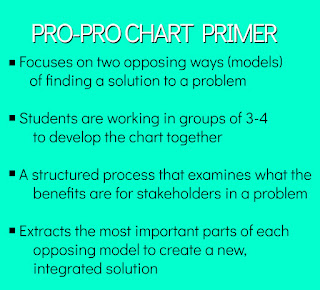Halton Goes Back To Class
Halton Goes Back to Class
As we mentioned in a previous post, this year the Halton District School Board has gone to the movies. Keeping with this theme, last Monday the board went back to class. Two hundred staff from the board spent their Monday evening watching a video discussion on the first chapter of the Innovator’s Mindset and participating in a live chat as part of a massively open online course. It was fun seeing so many colleagues participating in professional development outside of the normal working day. It was especially great for us because the conversations revolved around innovation and how it applies to the classroom.
In addition to some reading and thinking, participants in this MOOC have been asked to respond to the video chat with a blog post. Well, here is what we thought about the discussion on Monday night.
1. What do you see as the purpose of education? Why might innovation be crucial in education?
Man, George, talk about starting with a whopper of a question! The purpose of education is to prepare for life in society. The thing is, what a productive life in society looks like is rapidly changing. Employers are increasingly looking for innovators, with flexible, creative thinking, to drive their projects forward. Our education system needs to catch up to this new reality. How can we not only innovate as teachers, but also train our students to become their own innovators. The purpose of education is NOT to prepare students for university. That is not everyone’s destination. Also, which university are we preparing students for? The one we went to, or the one you went to, or another one? Is each one the same? Of course not. So, education should be preparing students for whatever life might put in their past. Resilience, perseverance, critical thinking, soft skills that make a big difference.
- “Change is an opportunity to do something amazing.” How are you embracing change to spur innovation in your own context?
Well, for us, The Shift means finding ways to create dialogue and build and reinforce a culture of sharing in the our board. Sharing isn’t really new for us and it certainly isn’t new for our board. What we are trying to do is find better, more efficient ways for all teachers in our board to connect and share their ideas. We are diving headlong into that! The huge change for us are the all of the extras and unknowns. We’ve dipped our toes into video making and editing and are looking ahead to starting a podcast down the line. All this is very fun and very much out of our comfort zone.
- If you started a school from scratch, what would you see as necessary, and what would you take out from what we currently do?
Having a set of guiding principles or a founding framework is the most important thing. A well articulated vision of what the school could be or wants to be makes all of the other work easier. It would be interesting to build a school where community is at the very core of how it functions. Schools do a pretty good job of this but there is always room for improvement. When we think of the total community of a school we wonder about how to foster and build student engagement and also, equally importantly, staff engagement in the community. It is important to find opportunities to celebrate, reflect and play in order to create engaged, energized humans who are willing to take risks. It would be great to see genius hours for all members of the community built into the school day.
All cards on the table, we would take out grading, in favour of some sort of pass/fail system with some sort of demonstration of mastery built in. Obviously we would need to be giving students lots of descriptive feedback in real time. We don’t want to squash students creativity by assigning a mark to it (that one is for you Sir Ken!)
Obviously a change like that would require a major reset on so many aspects of school culture and teaching. We think it’s time for that change! A Shift to put a renewed focus on allowing students to follow their passions, helping students discover what on Earth their passions might be and teachers in mentorship roles who are along for the ride sounds pretty idyllic (wide-eyed optimist you say?). Hey, we being asked to dream here, aren’t we?
4. Your choice from the book on the YouTube Live session.
One little bit that we particularly latched on to from the YouTube live session was the notion of advocating for Vintage Innovation. AJ Juliani, John Spencer and George Couros were mentioning old ideas, perhaps repurposed for the 21st century learner in mind. They Socratic Seminar (which was highlighted also in the Most Likely To Succeed Film), building with Duct Tape and Cardboard, and Sketchbooking (sing, art teacher hearts, sing!).
Caine's Arcade and the Power of Innovative Use of Cardboard
 |
| credit: Susan Murtaugh |

Comments
Post a Comment